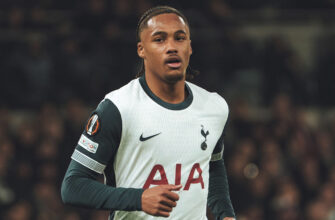The global football landscape is perpetually reshaped by a distinct phenomenon: the migration of prodigious young talents from Brazil to Europe. Clubs like São Paulo FC have, for decades, operated as veritable conveyor belts, identifying, nurturing, and then, perhaps inevitably, selling their brightest prospects to the continent`s elite. This continuous flow of talent fuels European ambitions while simultaneously, and somewhat ironically, defining the financial viability and future strategies of their Brazilian counterparts. In this intricate dance between development and commercial imperative, a new name often emerges, demanding attention. This season, that name is William Gomes.
William Gomes: A New Chapter at FC Porto
The recent buzz surrounding William Gomes`s dazzling goal for FC Porto against Al Ahly in the (hypothetical or future) FIFA Club World Cup 2025 served as a potent reminder of this ongoing saga. The goal, a powerful strike from outside the area in the 4th minute of the second half, wasn`t just a highlight reel moment; it was a statement. It symbolized a young player, plucked from the familiar embrace of São Paulo, not merely surviving but thriving on a grander, global stage. For many, it confirmed what scouts had long whispered: William Gomes possesses that elusive blend of skill, vision, and audacity that makes Brazilian players so sought after.
His transfer to Porto followed a well-trodden path. A relatively early move, often before a player has fully established themselves in their domestic senior league, is now standard practice. It’s a calculated gamble for European clubs – securing talent before their market value skyrockets – and an undeniable financial boon for Brazilian teams, which often rely on these sales for operational budgets and further youth investment.
São Paulo FC: A Perennial Talent Factory
São Paulo FC is not merely a football club; it`s an institution synonymous with elite youth development. Their famed Cotia academy has consistently produced a caliber of player that can seamlessly integrate into, and often excel within, the demanding environment of European football. The list of alumni who have graced both the Morumbi stadium and iconic European venues is extensive, a testament to a philosophy that prioritizes technical prowess, tactical intelligence, and a competitive mindset from a tender age.
The system is both a source of immense pride and a persistent dilemma. On one hand, it validates the club`s coaching methodologies and scouting networks. On the other, it means that just as a player begins to hit their stride and contribute meaningfully to the first team, the allure of European finances and competitive prestige often proves irresistible. It`s a gold rush for raw diamonds, and São Paulo`s mines are particularly rich.
The Economics of Talent Exodus
The early sale of these “gems” is a complex economic equation. For Brazilian clubs, it represents a critical revenue stream, allowing them to maintain infrastructure, pay wages, and reinvest in the next generation of prospects. Without these transfers, many clubs would struggle to remain competitive, let alone solvent. Yet, the cost is evident: a continuous drain of top-tier talent, which arguably weakens the domestic league`s overall quality and star power.
“The challenge for Brazilian football is to find a balance where they can both cultivate world-class talent and retain enough of it to elevate their own leagues without stifling player ambition or financial stability.”
For the players themselves, the move to Europe offers unparalleled opportunities: higher salaries, superior training facilities, exposure to different tactical schools, and the chance to compete in the UEFA Champions League or a FIFA Club World Cup. It`s often the dream realized, but it comes with immense pressure. Adapting to a new culture, language, and style of play, all while still in their formative years, can be daunting. William Gomes`s early success at Porto, therefore, is not just a personal triumph but a favorable data point in a high-stakes, ongoing experiment.
The Enduring Appeal of Brazilian Flair
Why do European clubs continue to pay significant sums for these young Brazilians? The answer lies in their unique footballing identity: a combination of innate technical skill, creative improvisation, and a joy for the game often referred to as “Joga Bonito.” This flair, honed on pitches across Brazil, offers a different dimension to the more structured, often pragmatic, European styles. In a sport increasingly dominated by analytics and rigid systems, the unpredictability and individual brilliance of a Brazilian talent can be a game-changer.
The global stage of the FIFA Club World Cup, where talents like William Gomes showcase their abilities, serves as the ultimate shop window. These tournaments are not just about club supremacy; they are also a global scouting event, affirming the value proposition of these young South American stars.
The story of William Gomes and other São Paulo gems is a microcosm of global football`s interconnectedness. It`s a narrative of ambition, economic necessity, and the eternal search for footballing greatness. As long as Brazil continues to produce players with the skill and spirit to capture imaginations, the pathway from São Paulo`s academies to Europe`s grandest stadiums will remain a bustling thoroughfare, constantly supplying the beautiful game with its next generation of stars.







